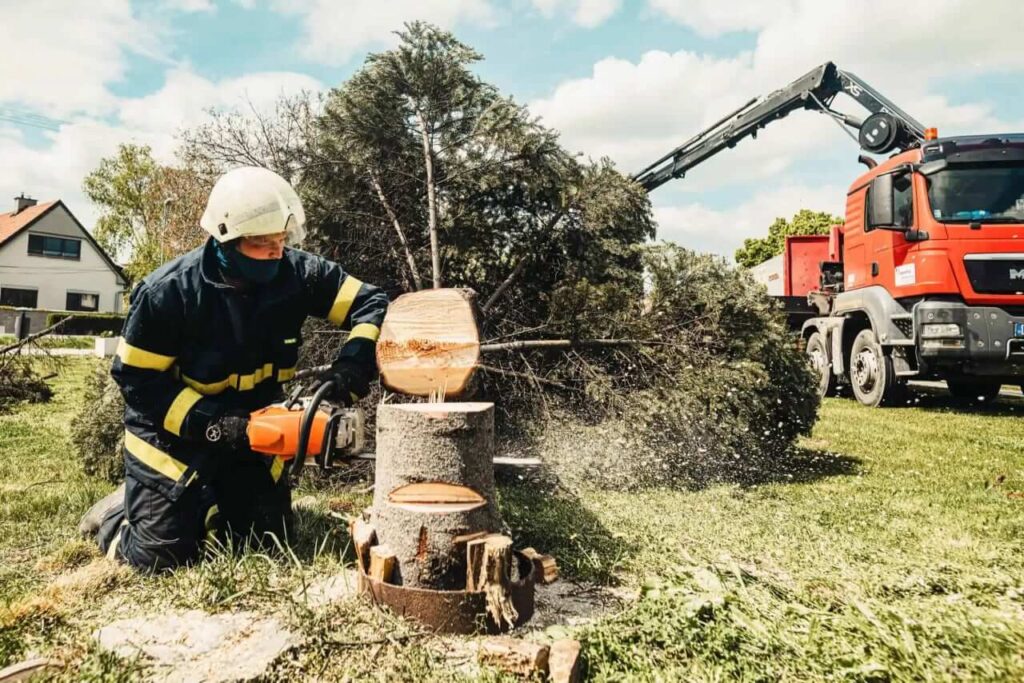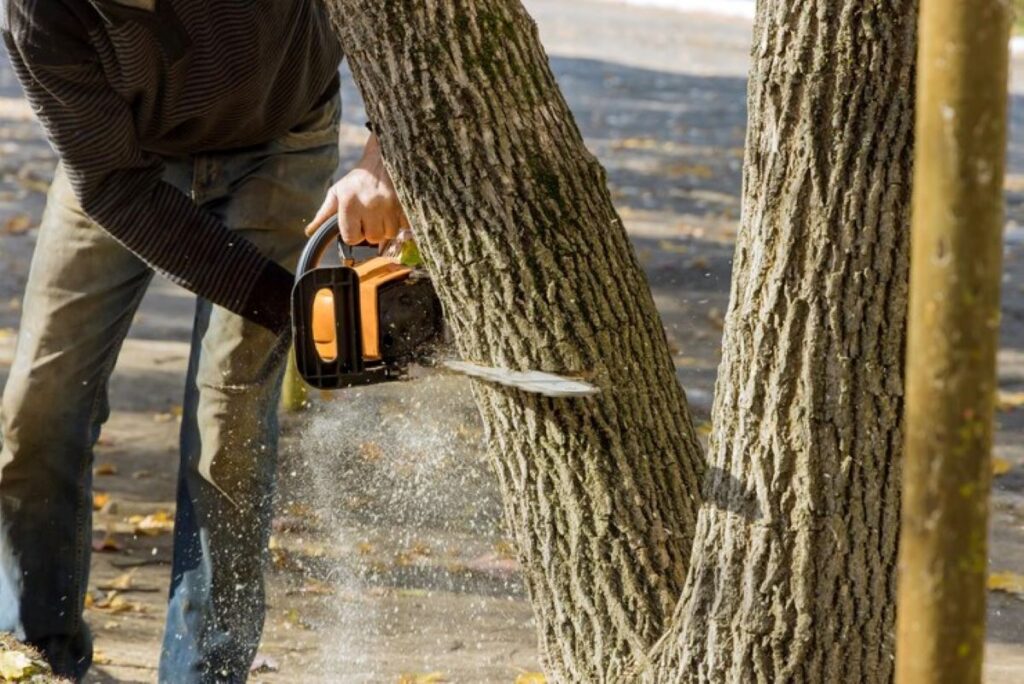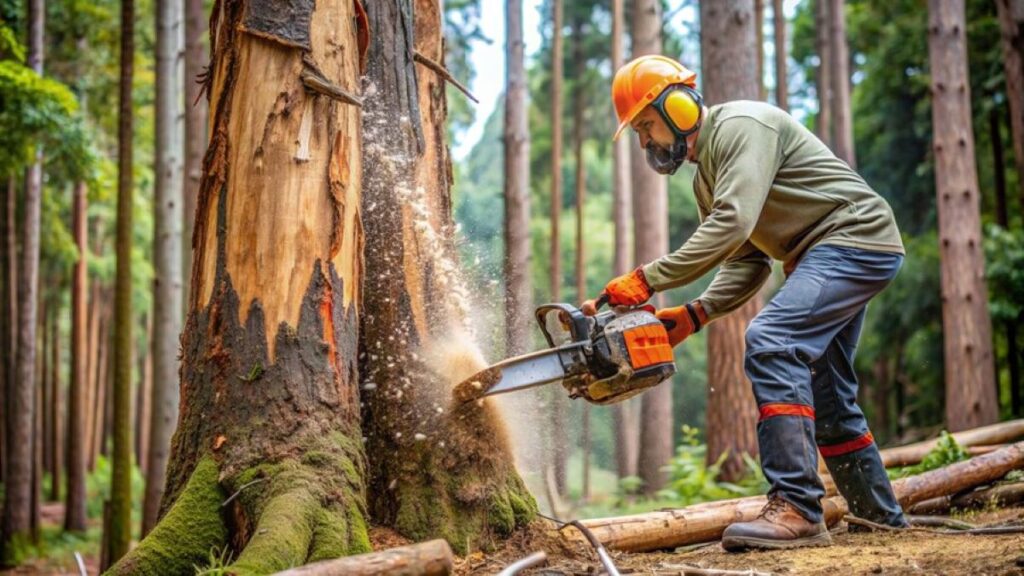In the vibrant city of Sydney, where urban life meets natural beauty, the presence of trees is both a blessing and a challenge. While trees provide shade, enhance property aesthetics, and contribute to the environment, there are instances when their removal becomes necessary. Whether due to disease, safety concerns, or landscaping needs, understanding what to expect from residential tree removal services is crucial for homeowners. This article delves into the various aspects of tree removal services in Sydney, ensuring you are well-informed before making any decisions.
Understanding Tree Removal Services
Tree removal services encompass a range of activities designed to safely and effectively remove trees from residential properties. These services are not merely about cutting down a tree; they involve a comprehensive approach that prioritises safety, environmental considerations, and the health of surrounding vegetation.
The Importance of Professional Services
Engaging professional tree removal services is essential for several reasons. Firstly, trained arborists possess the expertise to assess the condition of a tree and determine whether removal is the best option. They can identify signs of disease, structural weakness, or potential hazards that may not be apparent to the untrained eye.
Moreover, professional services ensure that the removal process adheres to local regulations and safety standards. In Sydney, specific guidelines govern tree removal, particularly in areas with significant vegetation cover. Professionals are familiar with these regulations, helping homeowners avoid potential fines or legal issues. Additionally, they are equipped with the right tools and machinery to carry out the job efficiently and safely, minimising the risk of accidents or damage to nearby structures.
Types of Tree Removal Services
Tree removal services can vary significantly based on the specific needs of the property and the trees involved. Common types of services include:
- Complete Tree Removal: This involves the entire tree being cut down and removed, including the stump, roots, and branches.
- Stump Grinding: After a tree is removed, the stump can remain a hazard. Stump grinding services eliminate the stump to prevent tripping and allow for new landscaping.
- Tree Pruning: Sometimes, only specific branches need to be removed. Pruning can enhance the health of the tree and prevent potential hazards without complete removal.
In addition to these services, many tree removal companies also offer emergency tree removal for situations where trees have fallen due to storms or other unforeseen events. This service is critical for ensuring safety and restoring normalcy to a property. Furthermore, some companies provide tree planting services, allowing homeowners to replace removed trees with new ones, thus contributing to the environment and enhancing the aesthetic appeal of their gardens. This holistic approach not only addresses immediate concerns but also promotes long-term sustainability and greenery in urban settings.
The Tree Removal Process
Understanding the tree removal process can alleviate concerns and help homeowners prepare for the procedure. Typically, the process involves several key stages, each designed to ensure safety and efficiency.
Initial Assessment
The first step in the tree removal process is a thorough assessment by a qualified arborist. This assessment includes evaluating the tree’s health, its proximity to structures, and any potential hazards it may pose. The arborist will also consider the surrounding environment, including other trees and plants, to determine the best approach for removal. Factors such as the tree’s species and age can also influence the decision-making process, as some trees may be protected by local regulations or may have ecological significance in the area.
Planning and Preparation
Once the assessment is complete, the arborist will develop a detailed plan for the removal. This plan includes the method of removal, the equipment required, and safety measures to protect both workers and property. Homeowners are encouraged to discuss the plan with the arborist, ensuring they understand the process and any potential disruptions. Additionally, it is advisable for homeowners to notify neighbours about the impending work, especially if the tree is large or if heavy machinery will be involved, as this can help mitigate any concerns and prepare them for potential noise or disruption.
Execution of Removal
On the day of removal, the team will arrive equipped with the necessary tools and machinery. Safety is the top priority, and all team members will wear appropriate protective gear. The removal method may vary depending on the tree’s size and location. For instance, larger trees may require a crane for safe removal, while smaller trees can be cut down using chainsaws. The team will also implement specific techniques, such as directional felling, to ensure the tree falls in a controlled manner, minimising the risk of damage to nearby structures or vegetation.
Once the tree is down, the team will proceed with stump removal or grinding, depending on the agreed-upon services. This step is crucial, as leaving a stump can lead to issues such as pest infestations or regrowth. Finally, the area will be cleaned up, with debris removed from the property. It is also worth noting that many tree removal services offer additional options, such as wood chipping or recycling, allowing homeowners to repurpose the wood for mulch or firewood, thus contributing to a more sustainable approach to tree management.
Cost Considerations
The cost of tree removal services can fluctuate based on several factors. Understanding these factors can help homeowners budget effectively for the service.
Factors Influencing Cost
Several elements can influence the overall cost of tree removal, including:
- Tree Size: Larger trees typically require more time, effort, and equipment to remove, resulting in higher costs.
- Location: Trees located near structures, power lines, or other obstacles may require specialised techniques, increasing the cost.
- Type of Tree: Some species are more challenging to remove due to their growth patterns or density, which can affect pricing.
Obtaining Quotes
Homeowners should obtain quotes from multiple tree removal services to ensure they receive a fair price. Reputable companies will typically offer free assessments and quotes, allowing homeowners to compare services and costs effectively. It is advisable to ask for a detailed breakdown of the quote, including any additional fees for stump removal or cleanup.

Safety Considerations
Safety is paramount in tree removal, both for the workers involved and for the surrounding property. Homeowners should be aware of the safety measures that professional services implement.
Risk Assessment
Before commencing any work, a comprehensive risk assessment is conducted. This assessment identifies potential hazards, such as nearby structures, power lines, and the tree’s health. By evaluating these risks, the team can develop a safe removal strategy that minimises danger.
Use of Equipment
Professional tree removal services employ specialised equipment designed for safety and efficiency. This includes chainsaws, ropes, and cranes, all operated by trained personnel. The use of such equipment ensures that the removal process is conducted safely, reducing the risk of accidents.
Environmental Considerations
Tree removal can have significant environmental implications, making it essential for homeowners to consider the ecological impact of their decisions.
Tree Replacement and Replanting
Many tree removal services in Sydney advocate for responsible practices, including tree replacement and replanting. When a tree is removed, it is often beneficial to plant a new tree in its place, contributing to the local ecosystem and enhancing property aesthetics.
Permits and Regulations
In Sydney, certain trees are protected under local laws, and removal may require permits. Professional tree removal services are knowledgeable about these regulations and can assist homeowners in obtaining the necessary permits. This ensures compliance with local laws and protects the environment. You may like to visit https://inkedforacause.com/palm-tree-removal-in-sydney-tips-and-best-practices/ to get about some tips and practices regarding Palm tree removal.
Choosing the Right Tree Removal Service
Selecting the right tree removal service is crucial for a successful and safe experience. Homeowners should consider several factors when making their choice.
Qualifications and Experience
It is essential to choose a tree removal service with qualified and experienced arborists. Look for certifications, insurance, and a solid reputation within the community. Reading reviews and testimonials can provide insight into the quality of service offered.
Customer Service
Excellent customer service is a hallmark of a reputable tree removal company. Homeowners should feel comfortable discussing their needs and concerns with the service provider. A responsive and communicative team is more likely to deliver a satisfactory experience.

Conclusion
Residential tree removal services in Sydney play a vital role in maintaining the balance between urban living and environmental sustainability. By understanding the various aspects of these services, homeowners can make informed decisions that prioritise safety, compliance, and ecological responsibility. Whether facing a hazardous tree or simply seeking to enhance their landscape, engaging professional tree removal services ensures a smooth and efficient process.
As Sydney continues to grow and evolve, the importance of responsible tree management cannot be overstated. Homeowners are encouraged to approach tree removal with careful consideration, ensuring that their actions contribute positively to the environment and the community.

